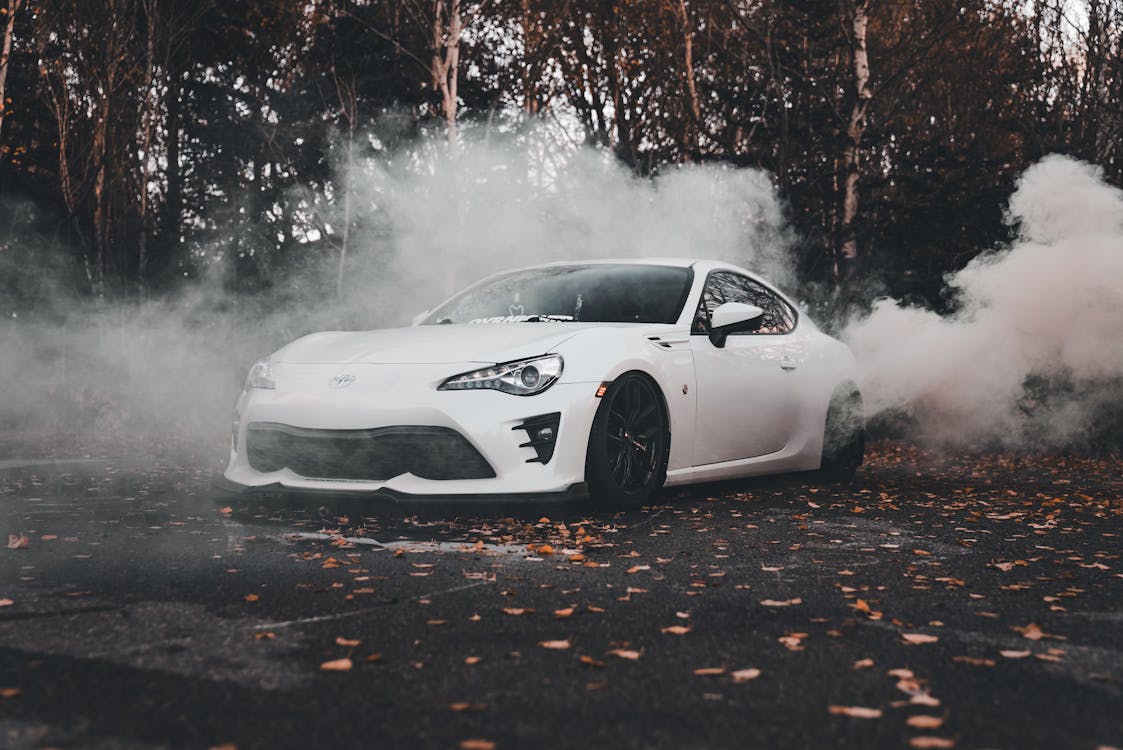Different Colors of Car Exhaust Smoke and What They Mean

Car exhaust smoke can tell you a lot about the health of your engine. While some emissions are normal, unusual smoke colors can indicate serious mechanical issues that need urgent attention. Understanding the different colors of exhaust smoke and their causes can help you diagnose problems early and prevent costly repairs.
1. White Smoke – Coolant or Water in the Combustion System
✅ When White Smoke Is Normal:
- A thin, wispy white smoke during startup is usually just condensation burning off in cold weather.
- It disappears quickly once the engine warms up.
❌ When White Smoke Is a Problem:
Thick, persistent white smoke can mean coolant is leaking into the engine, leading to serious engine damage if not fixed.
Possible Causes:
⚠️ Blown Head Gasket – Allows coolant to enter the combustion chamber, creating thick white smoke.
⚠️ Cracked Engine Block or Cylinder Head – Coolant leaks internally and burns with fuel.
⚠️ Leaking Coolant into the Intake Manifold – Causes overheating and potential engine failure.
🔧 What to Do:
✔ Check the coolant level – If it’s dropping fast, you likely have a leak.
✔ Inspect for overheating – If your temperature gauge is high, stop driving immediately.
✔ Take the car to a mechanic – A compression test or coolant system pressure test can confirm the problem.
🔹 Pro Tip: If you see white smoke mixed with a sweet smell, your coolant is burning inside the engine. Stop driving immediately to avoid engine failure.
2. Blue Smoke – Burning Oil
✅ When Blue Smoke Is a Problem:
If your car produces blue or bluish-gray smoke, it means engine oil is leaking into the combustion chamber and burning with fuel.
Possible Causes:
⚠️ Worn Piston Rings – Oil leaks past the rings into the combustion chamber.
⚠️ Valve Seal Failure – Allows oil to drip into the cylinders.
⚠️ Blown Turbocharger (for Turbocharged Cars) – Oil leaks into the exhaust.
⚠️ PCV Valve Malfunction – Causes excess oil consumption and leaks.
🔧 What to Do:
✔ Check your oil level – If it's dropping too fast, there's a leak.
✔ Look for oil leaks under the car – A puddle of oil means external leaks.
✔ Monitor engine performance – Loss of power, rough idling, or excessive oil consumption means a serious issue.
🔹 Pro Tip: Burning oil damages spark plugs and catalytic converters, so fix oil leaks quickly to avoid expensive repairs.
3. Black Smoke – Too Much Fuel (Rich Fuel Mixture)
✅ When Black Smoke Is a Problem:
If your car emits thick black smoke, it means too much fuel is entering the combustion chamber. This issue, known as running rich, can reduce fuel economy and damage engine components.
Possible Causes:
⚠️ Faulty Fuel Injectors – Spray too much fuel into the engine.
⚠️ Dirty or Clogged Air Filter – Restricts airflow, causing too much fuel to burn.
⚠️ Malfunctioning Mass Air Flow (MAF) Sensor – Sends incorrect air-fuel ratio signals.
⚠️ Damaged Oxygen Sensor – Fails to regulate fuel mixture, leading to over-fueling.
🔧 What to Do:
✔ Check your air filter – A clogged filter can cause black smoke.
✔ Monitor fuel economy – A sudden drop in mileage may indicate a fuel issue.
✔ Scan for error codes – A diagnostic scanner can detect faulty sensors or injectors.
🔹 Pro Tip: Black smoke reduces fuel efficiency and can clog your catalytic converter, leading to expensive repairs. Fix fuel system issues immediately.
4. Gray Smoke – Various Possible Issues
Gray smoke is less common but could indicate several different problems.
✅ When Gray Smoke Is a Problem:
If you see thick gray smoke, it might be due to:
Possible Causes:
⚠️ Transmission Fluid Burning (Automatic Cars) – A faulty transmission vacuum modulator sends fluid into the engine, where it burns.
⚠️ PCV Valve Failure – Causes excess oil burning, leading to gray smoke.
⚠️ Turbocharger Issues – A failing turbo can cause gray or bluish-gray smoke.
⚠️ Excess Condensation in the Exhaust – More common in diesel engines.
🔧 What to Do:
✔ Check transmission fluid levels – If they're low or discolored, your transmission may be leaking into the engine.
✔ Inspect PCV Valve – If clogged, replace it to prevent oil burning.
✔ Examine the turbocharger (if applicable) – Look for excessive oil consumption and performance loss.
🔹 Pro Tip: If gray smoke smells like burning oil or transmission fluid, have your car inspected immediately to avoid transmission damage.
5. No Smoke but a Strong Smell?
If you don’t see visible smoke but notice a burning or fuel-like smell, you may have:
✔ A Fuel Leak – Check for fuel drips under the car.
✔ A Clogged Catalytic Converter – Causes poor engine performance.
✔ An Exhaust Leak – Produces strong fumes inside the car.
🔹 Pro Tip: A burning smell without smoke can still indicate serious engine problems. Get a mechanic to inspect it.
Final Thoughts: What to Do If Your Car Emits Unusual Smoke
🚗 Quick Troubleshooting Guide:
|
Smoke Color |
Likely Cause |
Action to Take |
|
White Smoke |
Coolant Leak (Head Gasket, Engine Block) |
Stop driving & check coolant levels. Get a mechanic to
inspect. |
|
Blue Smoke |
Oil Burning (Piston Rings, Valve Seals) |
Check oil levels & look for leaks. Fix oil-related
issues ASAP. |
|
Black Smoke |
Too Much Fuel (Rich Mixture) |
Check air filter, oxygen sensors & fuel injectors.
Improve air-fuel ratio. |
|
Gray Smoke |
Transmission Fluid Burning or PCV Valve Issue |
Check transmission fluid & PCV valve function. |
|
No Smoke but a Strong Smell |
Fuel or Exhaust Leak |
Inspect for leaks and faulty catalytic converter. |
🚨 When to Visit a Mechanic Immediately:
✔ If the smoke is thick, continuous, and smells strong.
✔ If your car is overheating.
✔ If there’s a sudden drop in engine performance or fuel economy.
By understanding what different colors of car exhaust smoke mean, you can catch engine problems early, reduce repair costs, and keep your vehicle running smoothly 🚗✅
At the end of the day, your car’s exhaust smoke is like a distress signal—ignore it, and you might find yourself stranded at the worst possible moment. Whether it’s an overheating engine, an oil leak, or a fuel issue, getting ahead of the problem can save you from a bigger headache (and a bigger bill). If your mechanic gives you a repair quote that makes your wallet sweat, our vehicle repair loan is here to help. We’ll handle the bill while you pay in manageable installments—because the only thing your car should be blowing is fresh air!
Contact us through our contact form, call us on +254791573231 or visit one of our branches across Nairobi, Kiambu, Machakos, and Kajiado counties to explore your financial opportunities.




Comments ()